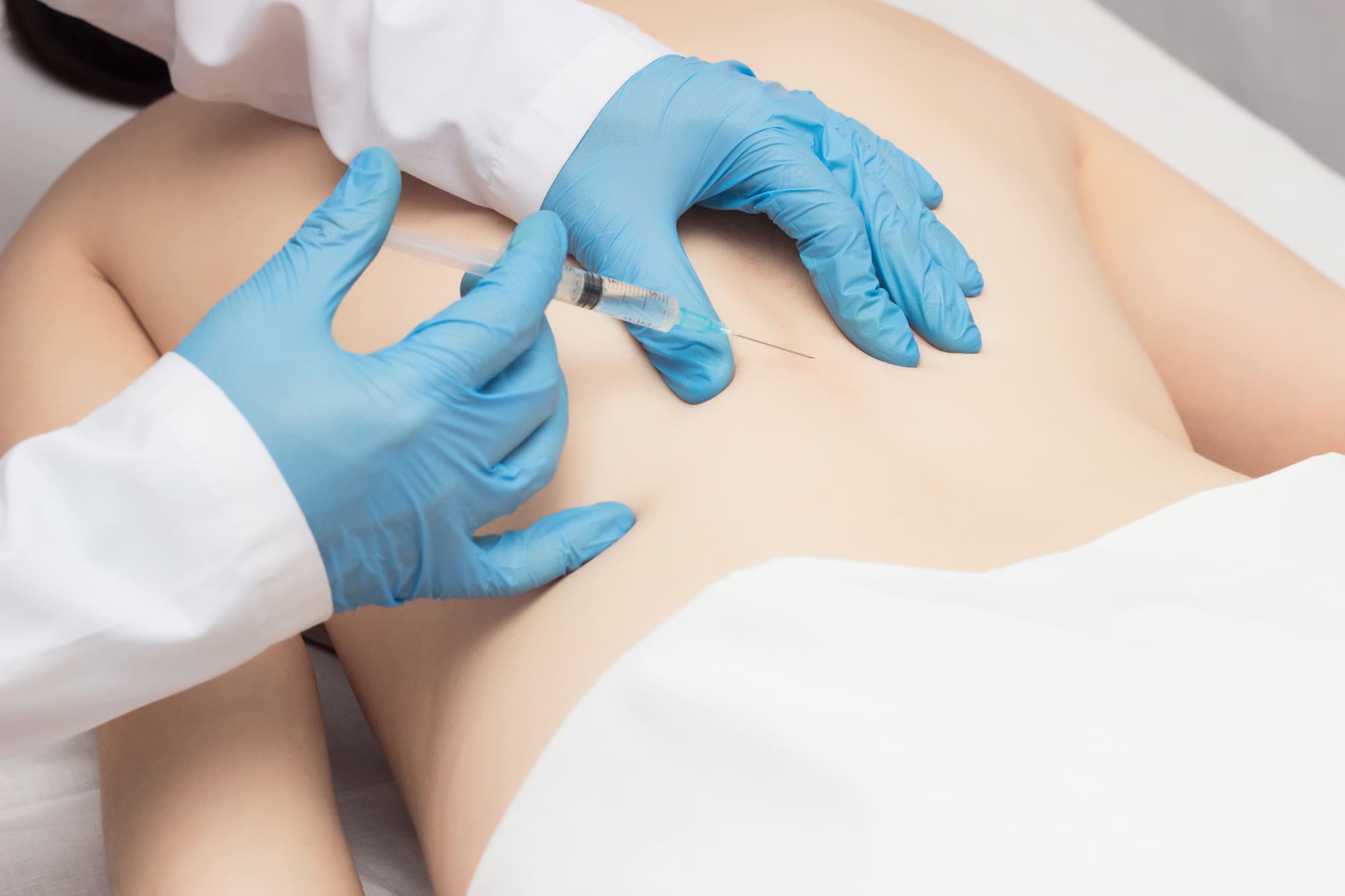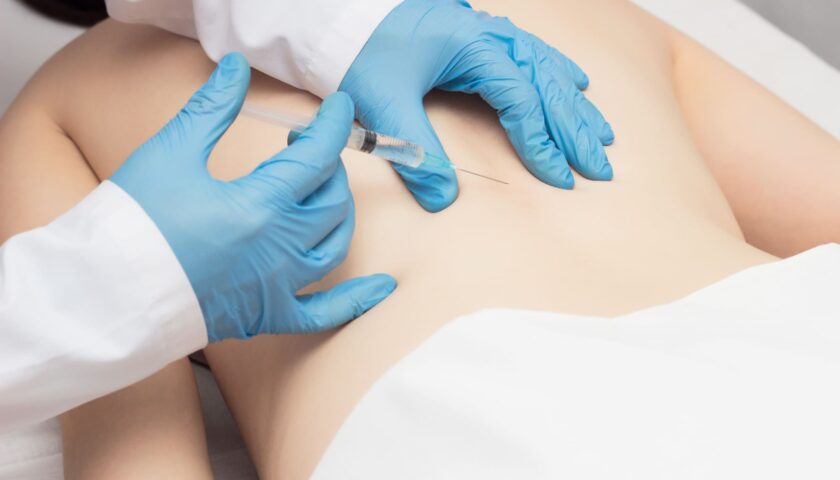
Botox is a medication that contains small doses of botulinum toxin. It relaxes and paralyzes specific muscles, resulting in the reduction of wrinkles and a rejuvenating effect.
Botox has been growing in popularity over the past 20 years. The medication is used not only in cosmetology but also in medicine to treat strabismus, dyskinesia, migraine, and infantile cerebral palsy. The therapeutic properties of botulinum toxin were known in 1981, but cosmetologists have officially started using the drug only since 2002. These days, the use of Botox has been approved by authoritative medical organizations.
How Botox Works
During botulinum toxin injections, it is directly injected into the chosen muscle and affects its nerve cells. It blocks the transmission of impulses from the brain to the muscle tissues, resulting in their temporary paralysis.
From the brain, the impulse travels through the nervous system and reaches the nerve endings of the muscle. Its contraction occurs due to the action of the neurotransmitter acetylcholine, which is released at the junction of the nerve ending and the muscle. For this to happen, the vesicles containing acetylcholine must merge with the membrane of the nerve ending.
It requires a complex of particular proteins. When botulinum toxin molecules enter the muscle tissue, they move toward the nerve endings, penetrate through the membrane, and block the action of one of the proteins. As a result, the vesicles containing acetylcholine can no longer merge with the membrane, and muscle contraction does not occur.
After approximately six to nine months, the effects of botulinum toxin on the muscles diminish, mobility returns and wrinkles start reappearing on the skin. Therefore, to maintain the cosmetic result, injections must be repeated regularly.
Trapezius Muscle Structure
The trapezius muscle is a flat, broad muscle located superficially at the back of the neck and in the upper back. The trapezius muscle is shaped as a triangle, with its base facing the vertebral column and the apex facing the acromion of the scapula. The trapezius muscles on both sides of the back together are trapezoidal.
The trapezius muscles are the visual center of the upper back; their trapezoidal structure ties together the neck, deltoids, and the broadest back muscles. The trapezius muscles are essential in shaping a person’s visual image.
Botox for Trapezius Muscle
A procedure called Botox in the shoulder or Traptox involves a few injections of Botox directly into the trapezius muscle to relax it.
Some people build up their trapezius muscles on purpose by lifting weights or working out at the gym, while others develop them poorly because of improper posture. But if these muscles are constantly tightened, they can change a person’s appearance and cause pain and discomfort.
There are two reasons why people might want to resort to Traptox: aesthetics and pain. Botulinum therapy for this muscle can provide relief, relieve tension, and improve a person’s quality of life. There is also an aesthetically pleasing effect – the person’s posture is improved, the shoulders are lowered, and the neck appears more elongated.
Suitable Candidates
Since trap botox has two main advantages, there are also two categories of people who may need this cosmetic procedure. The first category includes those who suffer from muscle pain and significant discomfort in the neck and back areas. This procedure can help people who engage in physically demanding work, constantly straining the trapezius muscle, or spend a lot of time hunched over computer screens.
The second category includes those who want to improve the appearance of their neck, making it look longer and more slender. However, discussing this option in detail with a doctor to determine if the procedure will be effective in each case is essential.
Benefits
The advantages of botulinum therapy compared to other rejuvenating procedures are undeniable:
- Safety. Despite being a potent toxin, botulinum in microdoses does not harm health. A dose much higher than the norm would need to be administered to cause harm to the body.
- High effectiveness. The initial results can be observed immediately after the procedure. Over a week, the effect will strengthen and last for approximately six to ten months.
- Natural elimination of botulinum toxin from the body. After the duration of the treatment has expired, the substance will start naturally leaving the body, requiring a repeat administration.
- An almost complete absence of side effects. When performed by an experienced specialist, the risks of complications are reduced to zero. Negative consequences may arise from a failure to follow proper rehabilitation protocols, so the patient must adhere to them closely.
Contraindications
Trapezius muscle botox injections are contraindicated if the patient has been diagnosed with the following:
- Cancer;
- Blood system disorders;
- Inflammatory processes in the injection area;
- Myasthenia;
- Chronic diseases in an acute stage;
- Endocrine and hormonal disorders;
- Somatic and mental disorders;
- Heart, kidney, or liver failure;
- Individual intolerance to the components of the injection;
- Tendency to form keloid scars.
Botulinum toxin injections are contraindicated for women during pregnancy and breastfeeding. The procedure is also not recommended for patients who regularly take the following groups of medications:
- Antibiotics;
- Anticoagulants;
- Muscle relaxants;
- Non-steroidal anti-inflammatory drugs.
Side Effects
Complications after botulinum therapy are rare but still possible. Patients encounter mainly the following adverse effects:
- Swelling, bruising;
- Numbness in the injection sites;
- Allergies;
- Asymmetry of the neck;
- Impaired speech and difficulty swallowing;
- Weakness, nausea, and dizziness.
Recovery Period
The cosmetologist explains the rules of the rehabilitation period after the procedure. Following the specialist’s recommendations to the letter is essential in consolidating the results and preventing negative consequences:
- Avoid assuming a horizontal position for the first 4 hours after botulinum therapy. Only sleep on your back, using a high pillow under your head.
- For four to five days, refrain from using makeup.
- For two weeks, exclude salty, spicy, and fatty foods from your diet, and avoid consuming alcoholic beverages, coffee, and strong tea.
- Limit sports activities.
- Avoid tanning, swimming pools, saunas, steam rooms, and hot baths.
- Avoid massages, peels, or scrubs until complete recovery.
Conclusion
Botox has gained significant popularity over the past two decades due to its ability to relax and paralyze muscles, resulting in reduced wrinkles and a rejuvenating effect. It is widely used not only in cosmetology but in various other medical fields.
Botox injections in traps can provide aesthetic and therapeutic benefits for the trapezius muscle. People who experience muscle pain and discomfort in the neck and back area, either due to physical exertion or poor posture, can find relief through this procedure. Additionally, those seeking to improve the appearance of their neck may achieve a longer and more slender contour.
Botox offers several advantages compared to other rejuvenating procedures, including its safety profile in microdoses, high effectiveness with immediate results, natural elimination from the body, and minimal side effects when performed by an experienced specialist.
FAQ
How many units do I need for Botox in the trapezius muscle?
Accurate injection dosage is paramount, especially when considering shoulder botox treatment. However, the final volume of botox needed for the treatment depends on multiple factors and can only be estimated by professionals prior to the procedure. The average number of Botox units for Botox in trapezius injections is 150 – 300.
What are the possible side effects of Trapezius Botox?
When injecting Botox into the trapezius muscle, side effects may include temporary swelling, bruising, numbness at the injection sites, allergic reactions, asymmetry, and momentary weakness or discomfort. It is crucial to consult with a professional to understand the potential side effects of Traptox treatment.
Can botox relieve trapezius pain?
Yes, Botox can be used for trapezius pain relief. Trapezius Botox injections have been found to relieve individuals suffering from muscle pain and discomfort in the neck and back areas.
Injectable aesthetics are popular due to their ability to provide noticeable results with minimal downtime compared to surgical procedures. They are versatile and can be tailored to meet individual aesthetic goals, whether it's enhancing lips, restoring facial volume, or smoothing out wrinkles. However, they should always be administered by qualified professionals to ensure safety and achieve optimal results.
Injectable aesthetics are used to enhance facial features, reduce the signs of aging, and improve overall facial symmetry and appearance.
Key types of injectable aesthetics include:
-
Dermal Fillers: These injectables are used to add volume, fill in wrinkles and folds, and enhance facial contours. They often contain substances like hyaluronic acid, collagen, or calcium hydroxylapatite, which help plump up the skin and smooth out fine lines and wrinkles.
-
Botulinum Toxin (Botox): Botulinum toxin injections temporarily relax facial muscles that cause wrinkles and lines to form. It is commonly used to treat forehead lines, frown lines between the eyebrows, and crow's feet around the eyes.
-
Collagen Stimulators: These injectables stimulate the body's own collagen production, helping to improve skin texture and firmness over time. Examples include poly-L-lactic acid (Sculptra) and calcium hydroxylapatite (Radiesse).
-
Neurotoxin Injections: Besides Botox, other neurotoxins such as Dysport and Xeomin are used similarly to reduce wrinkles and lines.





